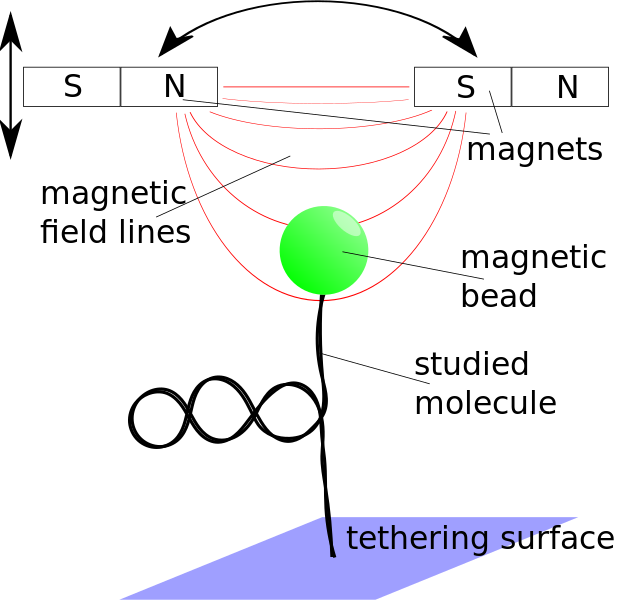 |
| Abby and Steve hard at work in our newly created student office! |
 |
| From Pelta et al., Journal of Biological Chemistry, 1996 |
Abby will be looking at "pellets" of DNA that are have been put in the state at the bottom of the "valley" in this graph. Ones that have condensed/aggregated/clumped together. Our collaborators at George Washington University have made these samples and then redissolved them in a different solution (in this case a highly concentrated KCl solution). They have made many of these samples, systematically changing the ratio of +3 ion (CoHex) to +1 ion (NaCl). Abby will be measuring the amount of +3 ion and +1 ion that was actually bound to the DNA when it was in its "clumpy" state. Using this, we hope to extract the physics, in particular the forces between DNA, that lead to this state. This is a follow-up on some work done previously by John Giannini in our lab that looked at the amount of +3 ions and +2 ions that were bound in the same state.
 |
| Image courtesy of Wikipedia |
tweezers you may ask? In magnetic tweezers, one uses small (but strong!) permanent magnets (think refrigerator magnets on steroids) to pull on small magnetic beads that are attached to the object of interest. In our case we often are pulling on DNA or DNA with other proteins interacting with it. By carefully calibrating the machine one can measure exactly how long the molecule of interest is when you pull it with a certain force. By measuring how hard it is to pull the molecule straight, we learn something about the structure of that molecule before we started pulling on it. (Just like you can tell how tangled a telephone cord is by how hard it is to pull the cord straight.) (I know those of you who are younger out there may be wondering what a "telephone cord" is. Pleas ask your parents.)
This is a pretty involved project that will involve writing a lot of computer code in a funny computer language called Labview and doing a lot of interfacing of physical instruments, motors, and cameras with the computer and the program that is running it. All-in-all a great introduction into machine design!
So, I hope you will all enjoy our journey this summer with us and hopefully will be cheering us on as we race to get all of this done before classes begin!
No comments:
Post a Comment